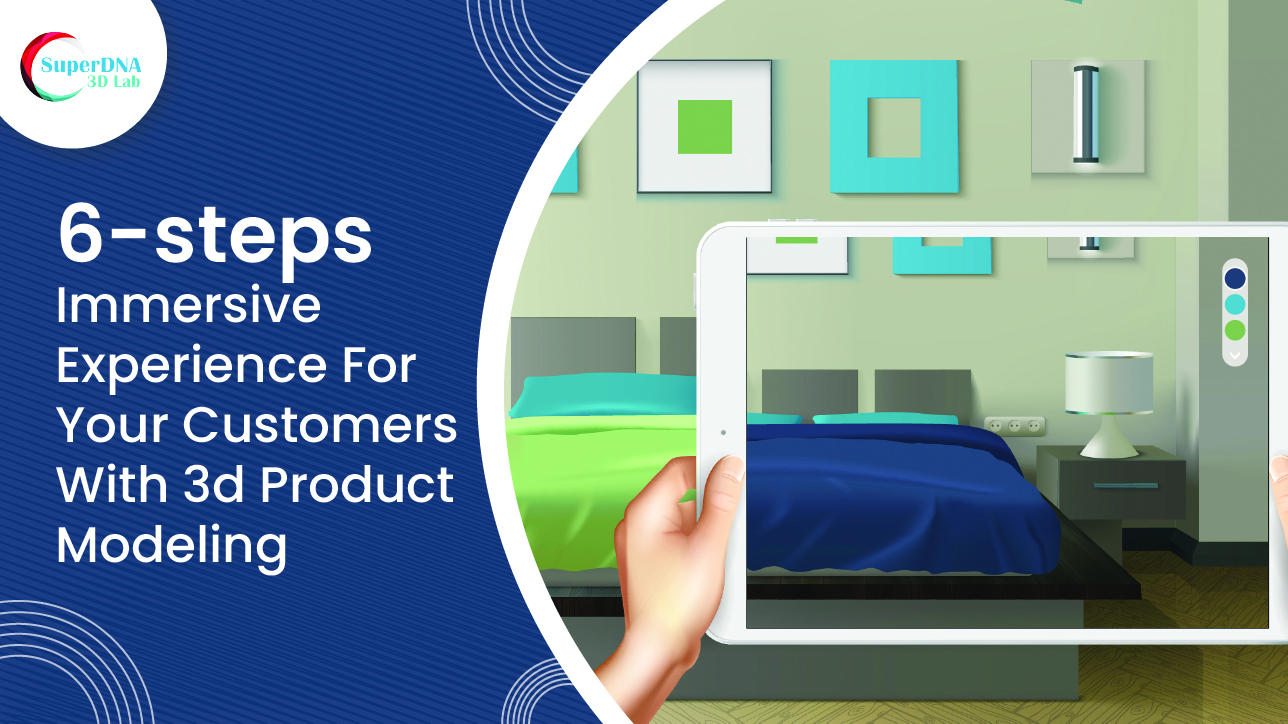
Your customer has evolved and grown over time. He does not seek static images anymore. He does not wish to go through lengthy product descriptions. He wants to experience what your product looks and feels like. He is looking for a stronger reason to bond with your brand. It is time to step into the world of augmented and virtual reality. It is time to discover what immersive experiences with the help of 3D renders can do for your customers and your company. Let’s begin:
- 360-Degree Viewer
A 360-degree view of immersive displays and walkthroughs allows you to create virtual stores and similar experiences for your customers. You can let your customers view your virtual storefront from the comfort of their homes. If you are a furniture brand, you can let your customers view the bulky product from all directions by just spinning their fingers. It is also a great opportunity for you to engage your customers more online than offline. For the consumer, it is as if they have walked into a real store without having to lift a toe.
- Web AR
Web-based augmented reality should be a part of your overall ecommerce strategy. By creating interactive 3D models, you can make your message stick in the user’s mind by up to 80% longer. You don’t need to send your users to any third-party sites such as Facebook or Snap-chat or any other platform. Your user just has to open their camera app and use your 3D model (downloaded from your website) to project it in their real environment. They can also use a QR code from your web page for the purpose. They will then be prompted to enter into your web AR experience seamlessly. Web AR makes use of various state-of-the-art tools such as surface tracking and image recognition to create lifelike 3D renditions for your users. Your consumer can project those 3D renders in their own environment using their smartphone and enjoy an enriching 3D virtual walk-through.
- Configurator
A 3D configurator lets your consumers or potential customers personalize your product to their specifications. The biggest bonus of this configuration feature is that the entire setup is very easy to use and the changes to the product can be made in real-time. Your customers can witness how the products transform according to their preferences. It develops a strong sense of dependability and loyalty in their minds towards your brand. 3D configurators help you choose dynamic pricing for all the personalizations that your customers make on your products, thereby increasing your profits significantly.
- VR Experience
You must already know by now that virtual reality experiences are supported by various platforms. If you take, for instance, mobile VR platforms, you will know how a smartphone along with a headset can be used to create almost life-like virtual reality experiences. The user can rotate their head to look around the virtual scene that gets created in front of their eyes. The accelerometer inside their smartphone can track the orientation of their head and constantly keeps on updating the scene that is rendered in front of them. One perfect example of such technology is the Oculus Go which connects with your smartphone easily and lets you experience high-quality 3D content in the comfort of your home.
- AR Try-On
This feature is very specific to apparel manufacturers and furniture suppliers online. The user simply has to download a realistic 3D model of your product and project it into their real environment using their smartphone. These models can also be combined with their own images that lets them understand the dimensions and usability of the product much better. This is where virtual meets reality.
- Virtual Room Decorator
The demand for virtual room decorators is also on the rise. With several furniture brands and practically countless e-commerce players wanting a piece of the pie, the number of experiments with 3D simulations has increased. The technology of today is capable of providing your consumers with the ability to design their rooms and populate their space with 3D furniture pieces of their liking.
Textures such as wood, fabric, metal, stone, leather, laminates, carpets, tiles, bricks, wallpapers, and a lot more can be simulated in these virtual room decoration platforms. The user can design their own floor plan, decorate their rooms according to their tastes, and take a virtual tour of the space without anybody’s interference and minimal guidance. All you have to do is invest in the right technology that is capable of providing them the most appropriate and easy-to-use platform for the same.
Immersive E-Commerce – Brace For The New Standard
Immersive E-Commerce is not the future. It is our present. Online shopping has already evolved and you need to evolve with it. The tried and tested strategy where you displayed photos and product descriptions, is a thing of the past. The customer has already tasted the unmatched experience of 3D simulations and product visualization. If you want to provide them with exactly what they seek, it is time to discover what 3D immersive experiences can do for your customers and your brand.